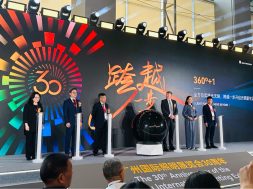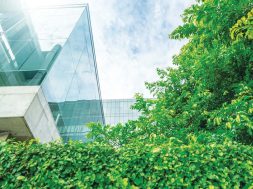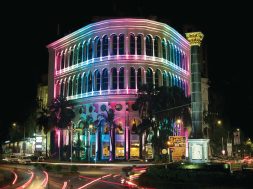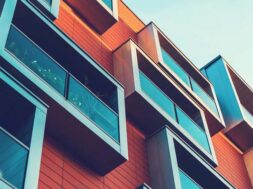ECO-CARE vying to lead green building materials industry“We are focusing on educating architects as I believe architects play a key role in promoting green building concepts,” says Vijay Bhaskar Suryadevara, Managing Director, ECO-CARE Building Products Pvt. Ltd, manufacturer of PRIME AAC Blocks
Although the current infrastructure industry is not in a very good shape, there is a significant potential for India to compete with western peers and China. Vijay Bhaskar Suryadevara talks about infrastructure requirements in India as well as green building concept.
What is AAC, and how is it different from conventional bricks?AAC is the short form of Autoclaved Aerated Concrete. AAC technology was invented by the Swedish scientist Johan Axel Ericson during 1920s. But it took a long time for the invention to be commercially viable and in wide use in developing economies like India. However, AAC blocks are extensively used in Europe, Middle East, South-East Asia, China and USA.
AAC blocks are made of fly ash or sand, cement, lime and gypsum. Depending on the technology adapted, Fly Ash or Sand can be used. AAC Blocks are alternative to conventional mud brick or red brick. The process of manufacturing red brick is very polluting and not very scientific. Due to heavy manual involvement in the manufacturing process of red brick, it is very difficult or almost impossible to maintain dimensional sanctity of red bricks. As bricks or blocks are used in walls and walls are mostly plastered with cement-sand mortar, the dimensions of the bricks/blocks play a very crucial role in determining the quantum of plastering material used. As AAC blocks are manufactured in an industry which is mostly automated, this dimensional sanctity is taken care of. Also, steel is a major component of the construction activity. As the amount of steel used depends on the load to be taken by the building, the dead weight of the structure and the super structure is also taken in to consideration in the calculation of steel requirement. As AAC blocks are lightweight (specific gravity of 0.58 to 0.7), they are much lighter than red bricks /cement bricks, steel usage can be reduced. AAC blocks are so lightweight that they actually float in water. Generally, the amount of steel used in construction by taking red bricks into consideration is approximately 2.5 to 2.75 kg/sq. feet of built-up area. By using AAC blocks, the steel usage comes down to 2.25 kg/sq. feet. That’s a saving of almost 25 per cent in construction steel, resulting in cost saving of almost Rs 12-15 in construction cost.
Apart from dimensional sanctity and lightweight, AAC blocks have better sound insulation and better thermal conductivity than any of the walling material available in the market. Due to better thermal insulation, the residents can save a lot on the HVAC (Heating, Ventilation and Air Conditioning) load. In a dry country like India, the savings in electricity charges due to saving in air conditioning can be significant, especially during summer. These attributes of sound and thermal insulation makes AAC blocks preferred walling material in commercial spaces.
In addition, AAC blocks are pest resistant, non-corrosive and highly durable. Moreover, as AAC Blocks are generally big in size compared to red bricks, the speed of construction also increases, resulting in quicker revenue realisation for builders.
How can AAC bricks help in propagating green buildings?From an environment perspective, the process of manufacturing AAC blocks is highly energy efficient. The manufacturing process emits just 6-7 per cent of CO2 compared to the manufacturing process of red bricks for producing equal volume of materials. As AAC blocks are lightweight, even transporting the blocks from the factory to the customer site will have a positive impact on the environment. Generally, AAC blocks are transported in trucks. The state road transport department has indicated certain restrictions on the material (in metric tonnes) depending on the number of axels and tyres. Due to its lightweight, AAC blocks, the volume of AAC blocks transported per truck is much more than the volume of red bricks transported on the same truck. Due to the positive impact on the environment, ECO-CARE’s project has been approved by UNFCC (United Nations Framework for Climate Change).
One more important aspect of AAC Blocks manufacturing is, all the materials used are recyclable and the finished product or the intermediary can be disposed without having any negative impact on the environment. Also, AAC Blocks are the best way of commercially using waste (fly ash) generated from the thermal power plants. One has to consider the difficulties faced by thermal power plants in disposing fly ash without impacting the environment and living conditions of the people in the vicinity of the power plant.
By considering these factors, IGBC (Indian Green Building Council) has considered AAC blocks as a green building material.
How fast can buildings be created with AAC blocks when compared to conventional bricks?The saving in construction time by using AAC blocks is significant. In fact, time savings can be observed in all aspect of brick work right from movement of bricks from the bricks stack to respective floors, brick work, brick jointing work and plastering. There is a quantifiable time saving of 40 per cent in each of the above activities resulting in significant time savings by using AAC blocks. Also, one has to keep quality in mind while constructing a building in a jiffy. By using AAC blocks, quality in big part of construction is taken care.
Today design of buildings has changed drastically; does AAC blocks have the adaptability to work with design variability?Yes, 100 per cent. This is a very valid question, and no other question emphasizes the importance of AAC blocks better than this. AAC blocks are very adaptable and can be cut in to any desired shape as required in site. Due to growing requirement of HVAC aspect in the building design, AAC blocks are indispensible when it comes to constructing buildings of tomorrow. Many people think that AAC blocks come in big sizes and are difficult to handle. This is absolutely not correct as AAC blocks can be cut/modified as per conditions.
What is the current status of the infrastructure industry? Are you getting more orders now or has it trickled down?The current infrastructure industry is not in a very good shape. Though infrastructure requirement in India is huge, there are any many issues holding the industry down. However, there is a significant potential to this industry as India has a lot of catching up to do when it tries to compete with western peers and China. We all know that infrastructure is a key to a nations’ competence. The industry is not doing that good, especially in the past 3-4 years. The industry is getting bogged down by few issues such as ease of financing, slowed economic growth prospects etc. The important thing is all these issues are solvable, and it is very important from the nation’s perspective that these issues are addressed. I am confident that within a matter of time, infrastructure sector will return back to its heydays.
Green building concept is still at nascent stage in India; what can be done to promote green technologies in India?Yes. Green building concept is in nascent stage in India. However, it is fast catching up. Builders are considering green building concepts as their target audience, especially the educated working middle class are sensitive to environmental issues. So a green building is a good selling proposition to educated working youth. However, if the government can take a step forward and encourage green building industry by offering tax exemptions like excise duty waiver, most of the green building concepts will be commercially viable. Such a move will give a great boost to these products manufacturers and all the eco-friendly materials will be commercially viable. Then green building concepts will not just be a feel good factor or a selling proposition, but they will be the value drivers in the construction industry.
What is your vision about your company? How do you see your participation in promoting green technologies in future? We want to be the leader in green building materials industry. We are planning to participate in exhibitions, road shows to promote green building materials. We are focusing on educating architects as I believe architects play a key role in promoting green building concepts. Architects to building materials are like doctors to medicines.
Cookie Consent
We use cookies to personalize your experience. By continuing to visit this website you agree to our Terms & Conditions, Privacy Policy and Cookie Policy.









